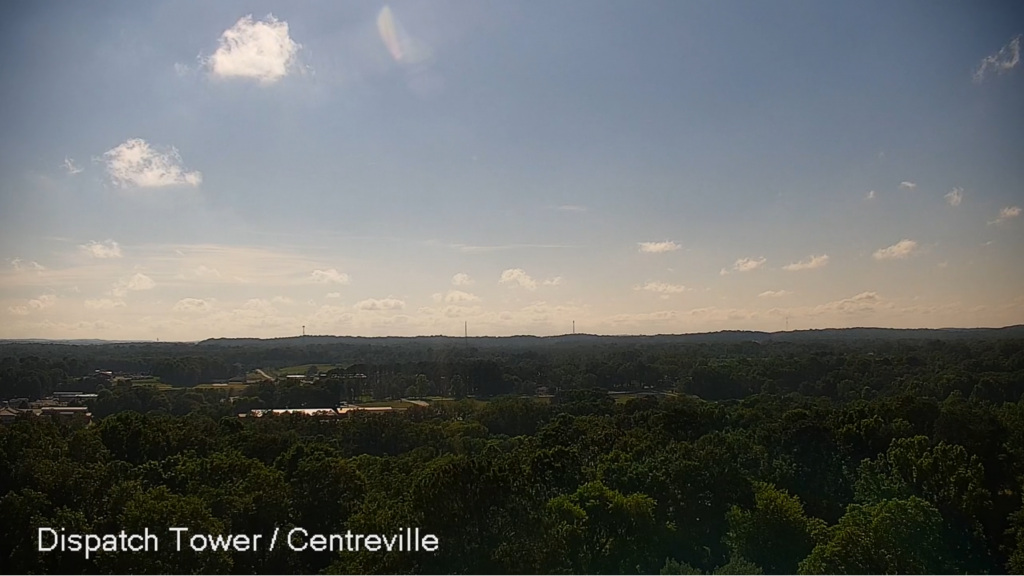The 1939 Metro-Goldwyn-Mayer film “The Wizard Of Oz” embedded unforgettable images of tornadoes and their dangers into my childhood memory. This cinematic portrayal highlights the power of visual representation in understanding severe weather conditions.
Meteorologists across the nation have realized the effectiveness of visualizing weather events. Seeing is believing – a live camera view of active danger in a community can be exactly what it takes to have a tornado warning taken seriously.
Rise of the Weather Cameras
As internet access has become more widespread, there’s been a significant increase in the installation of permanent weather cameras. These new views provide those covering severe weather a powerful communication tool for getting warnings out and having them taken seriously. WBRC, a television station covering the Birmingham/Tuscaloosa/Anniston area, operates 22 of these at the time this article was written based on the views available from their website. You can click here to see pictures from the different camera views they have right now.
Recently I had the opportunity to work with WBRC’s Chief Meteorologist Wes Wyatt on the installation of two new severe weather cameras for their SkyVision network. One of these cameras is situated on the 911 dispatch tower on our town square. The other is located at Adair Tire in Gardendale, Alabama. Check out the gorgeous view from the camera operating here in Centreville:

My responsibilities for this job were identifying the equipment necessary to mount and cable these cameras. Additionally, I handled securing internet access at these two locations and making the cameras accessible via a closed internet tunnel to the WBRC studio.
Since getting the Centreville camera online, we’ve had a number of close calls with tornadoes. Each time a tornado has threatened my town, the surreal experience of seeing the danger on live TV stirred awe, some fear, fascination, but mostly a profound appreciation for weather camera technology available today. Wes and his staff at WBRC display these views and show the public what is concerning and what isn’t. They can show when there’s evidence of a funnel trying to drop, or perhaps how close lightning is and the importance of getting indoors away from it.
What does it take to get a weather camera online?
The ingredients for a camera site like this aren’t particularly complex. You need a good quality camera – we used the ICIP-2501HD-IR. You’ll also need the necessary mounting hardware to attach this to something like a pole or tower leg.
As far as cabling goes, I used Ubiquiti’s Carrier Class outdoor cable terminated with Ubiquiti Tough Connectors. Surge protection was added to this link for lightning and ESD events using Ubiquiti’s ETH-SP-G2. The camera itself was powered using a Unifi POE switch.
Good internet access and the parts listed above represent the essentials needed to host a weather camera. Of course there’s also the logistics of getting tower climbers and the necessary insurance and certifications on hand to get one of these installed. Depending on the proposed location for a camera, you might also have to navigate securing a lease for a tower site. But this isn’t required if instead you’re mounting on something like a rooftop.
What about making a camera view available from the public internet?
If you have access to a server, you can use a tool such as FFMPEG to convert the camera’s video stream into a format that will enable playback in the browser. For the view above, I setup a Debian Linux server and installed FFMPEG into it. Once FFMPEG was installed, the following command was used to login to the camera, capture the stream data, then convert it to a browser format that can be played back on any device without plugins or special software. Or without even needing to login!
ffmpeg -rtsp_transport tcp -max_delay 5000000 -v info -i rtsp://SECRETUSERNAME:SECRETPASSWORD@XX.XX.XX.XX:554 -c:v libx264 -b:v 1000k -vf scale=-1:720 -r 24 -crf 23 -c:a copy -bufsize 1835k -pix_fmt yuv420p -flags -global_header -hls_time 4 -hls_list_size 10 -hls_flags delete_segments -start_number 1 /var/www/html/video.m3u8^CWith this in place, you can create a basic HTML page with a video player to stream this in any browser. The HTML source code I use for mine is on a Github Gist here if you’re interested.
Should you help bring a weather webcam to your own community?
From where I sit, the advantage of having a local weather camera is clear. With the continued progress of technology, it’s never been easier to pull the logistics together necessary to get a weather camera online. The hardware costs are also reasonable and in reach for most businesses and governments. If you’re a local business owner or government representative with access to a high point in your town, consider the significant benefits of bringing a weather camera to your community. I’m available for hire to guide you through this process if you need assistance.


Leave a Reply